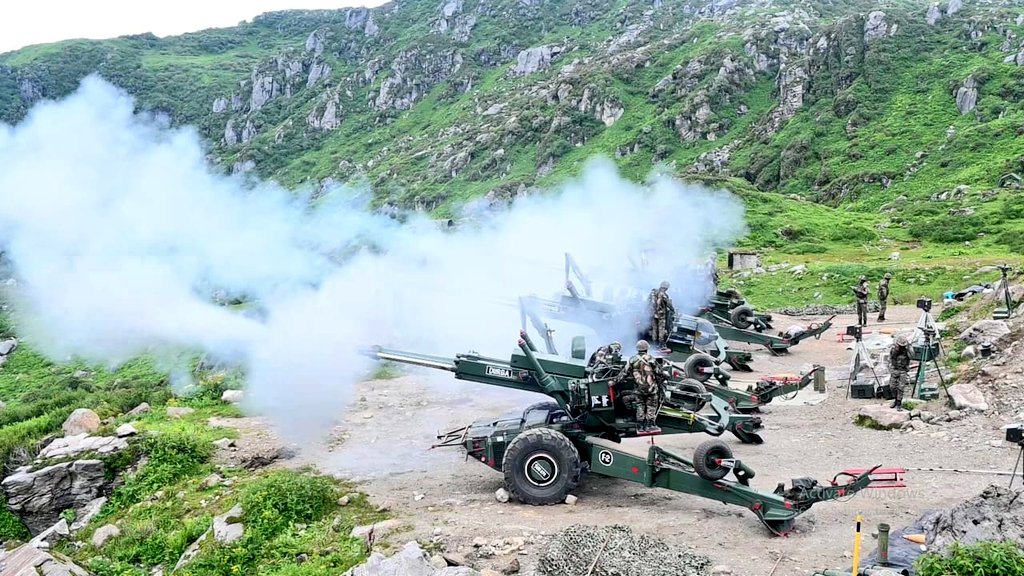In a major step toward tech-enabled warfare, the Indian Army successfully conducted the high-altitude ‘Divya Drishti’ exercise in East Sikkim in July 2025, integrating cutting-edge artificial intelligence (AI), unmanned aerial vehicles (UAVs), and secure communication systems into its operational playbook.
Set against the backdrop of a volatile Himalayan frontier, the exercise signals a shift in India’s approach to future warfare, where speed, precision, and situational awareness could decide the outcome of battles.
Spearheaded by the Trishakti Corps, which guards a critical stretch of the India-China border, the exercise tested a wide array of battlefield technologies under realistic conditions.
These included AI-enabled surveillance systems, integrated command and control platforms, and real-time data-sharing networks linking frontline units with higher headquarters. According to the Ministry of Defence, the objective was to test and refine the Indian Army’s ability to “see more, understand quickly, and act fast,” a vital necessity in modern high-tempo conflicts.
What is the Geopolitical Context of Divya Drishti exercise?
This technological push comes at a crucial time. The Line of Actual Control (LAC) with China, particularly in eastern Ladakh and the Sikkim-Arunachal sectors, remains tense despite ongoing rounds of military talks.
The People’s Liberation Army (PLA) has invested heavily in ISR (Intelligence, Surveillance, and Reconnaissance) systems, satellite-based communications, and drone warfare, making it imperative for India to keep pace. ‘Divya Drishti’ reflects a clear counter to China’s growing military-tech edge in the region.
Moreover, the exercise aligns with the Indian Army’s broader transformation vision under the “Decade of Transformation” roadmap. By incorporating indigenously developed systems, consistent with the Atmanirbhar Bharat initiative, India is also signalling its intent to reduce dependence on foreign suppliers for critical military technologies. This reduces vulnerabilities in wartime logistics and strengthens strategic autonomy.
What are the Doctrinal Shifts and Future Implications of Divya Drishti?
‘Divya Drishti’ isn’t just a tech trial; it reflects evolving doctrines where hybrid warfare, AI-backed intelligence, and rapid decision loops are paramount. For instance, the integration of AI-enabled sensors with secure battlefield networks helps reduce the “sensor-to-shooter” time, a key metric for battlefield superiority.
Such capabilities allow commanders to act on near-real-time intelligence, enabling faster targeting, smarter deployment, and agile counter-responses.
Lieutenant General Zubin A. Minwalla, General Officer Commanding of Trishakti Corps, highlighted that the learnings from the exercise will inform future Indian Army tactics and strategies across diverse terrains, from the icy Himalayan passes to dense forests and urban environments.
How does Divya Drishti help the Indian Army prepare for tomorrow’s warfare?
As warfare becomes increasingly tech-centric, exercises like ‘Divya Drishti’ offer a glimpse into how the Indian Army is preparing for conflicts of tomorrow, especially amid evolving threats from technologically advanced adversaries like China.
With AI and indigenous tech at its core, India is charting a course toward smarter, faster, and more self-reliant combat operations, bolstering both deterrence and defence on its northern frontiers.
